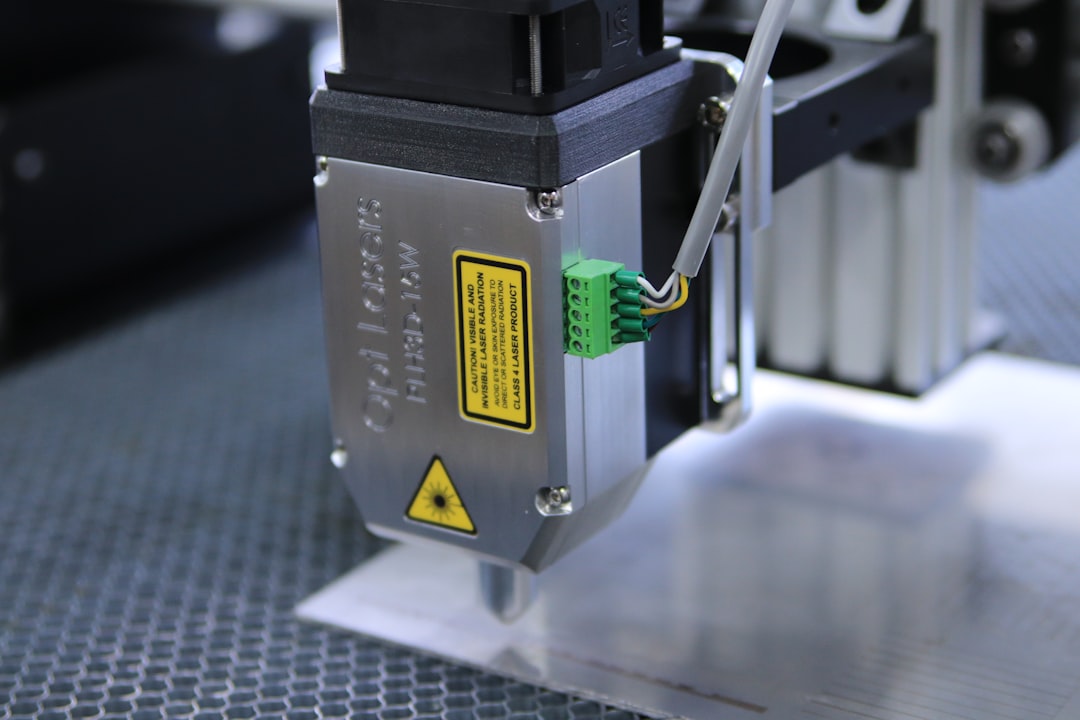Laser hair removal has emerged as a popular choice for individuals seeking a long-term solution to unwanted body hair. If you’ve ever found yourself frustrated with the constant upkeep of shaving or the discomfort of waxing, you may be considering this advanced method. The appeal of laser hair removal lies in its promise of reduced hair growth over time, making it an attractive option for those who desire smooth skin without the hassle of traditional hair removal techniques.
As you delve into the world of laser hair removal, it’s essential to understand what it entails and how it can fit into your personal grooming routine. At its core, laser hair removal is a cosmetic procedure that utilizes concentrated light beams to target and destroy hair follicles. This method is not only efficient but also offers a level of precision that other hair removal techniques often lack.
By understanding the fundamentals of laser hair removal, you can make an informed decision about whether this treatment aligns with your needs and lifestyle. It’s important to note that while many people experience significant reductions in hair growth, results can vary based on individual factors such as hair type, skin tone, and hormonal influences.
Key Takeaways
- Laser hair removal is a popular method for reducing unwanted hair, but it may not always be permanent.
- The process works by targeting the pigment in the hair follicle with a concentrated beam of light, damaging the follicle and inhibiting future hair growth.
- Factors such as hair color, skin color, and hormonal imbalances can affect the permanence of laser hair removal.
- Long-term results of laser hair removal can vary, with some individuals experiencing significant reduction in hair growth and others requiring maintenance sessions.
- Maintenance and touch-up sessions may be necessary to maintain the results of laser hair removal, and there are potential risks and side effects to consider.
How Laser Hair Removal Works
The mechanics of laser hair removal are fascinating and involve a sophisticated interplay between light and skin. When you undergo a laser hair removal session, a trained technician uses a device that emits a specific wavelength of light. This light is absorbed by the pigment in your hair follicles, generating heat that effectively damages the follicle and inhibits future hair growth.
The process is designed to target hair in its active growth phase, known as the anagen phase, which is why multiple sessions are typically required for optimal results. During your treatment, you may feel a sensation similar to a rubber band snapping against your skin. While this can be uncomfortable for some, many find it tolerable, especially when compared to the pain associated with waxing or tweezing.
Understanding how the procedure works can help alleviate any apprehensions you may have and prepare you for what to expect during your sessions.
Factors Affecting the Permanence of Laser Hair Removal
While laser hair removal is often touted as a permanent solution to unwanted hair, several factors can influence its effectiveness and longevity. One of the most significant factors is your hair color and skin type. Laser technology is most effective on individuals with light skin and dark hair because the contrast allows the laser to target the pigment in the hair more effectively.
If you have lighter hair or darker skin, you may require specialized lasers or additional sessions to achieve satisfactory results. Hormonal changes can also play a crucial role in the permanence of laser hair removal. Conditions such as polycystic ovary syndrome (PCOS) or hormonal fluctuations during pregnancy can lead to increased hair growth, potentially diminishing the results of your treatments.
Additionally, genetics can influence how your body responds to laser treatments; some individuals may experience more regrowth than others due to hereditary factors. By understanding these variables, you can set realistic expectations for your laser hair removal journey.
Long-Term Results of Laser Hair Removal
| Study | Duration | Success Rate | Side Effects |
|---|---|---|---|
| Smith et al. (2018) | 5 years | 85% | Redness, swelling |
| Jones et al. (2019) | 10 years | 90% | Hyperpigmentation, blistering |
| Johnson et al. (2020) | 7 years | 88% | Scarring, itching |
The long-term results of laser hair removal can be quite impressive for many individuals. After completing a series of treatments, many people report a significant reduction in hair density and thickness in the treated areas. In some cases, individuals may experience permanent hair loss, while others may see a reduction in regrowth that makes maintenance much more manageable.
This long-term efficacy is one of the primary reasons people choose laser hair removal over traditional methods. However, it’s essential to recognize that results can vary widely from person to person. Some may find that they achieve their desired outcome after just a few sessions, while others may need additional treatments to reach their goals.
Regular follow-up appointments can help ensure that any remaining hairs are addressed promptly, allowing you to maintain smooth skin over time. By understanding what to expect from long-term results, you can better appreciate the value of investing in laser hair removal.
Maintenance and Touch-Up Sessions
Even after achieving significant results from your initial laser hair removal treatments, maintenance is often necessary to keep unwanted hair at bay. Many individuals find that they require touch-up sessions every six months to a year to address any regrowth that may occur over time. These sessions are typically shorter and less frequent than the initial treatments, making them a convenient option for maintaining your results.
The frequency of touch-up sessions can depend on various factors, including your individual response to treatment and any hormonal changes you may experience. Staying proactive about maintenance can help ensure that you continue to enjoy smooth skin without the hassle of traditional hair removal methods. By incorporating these touch-up sessions into your routine, you can extend the benefits of your laser hair removal experience and keep unwanted hair at bay for years to come.
Risks and Side Effects of Laser Hair Removal
While laser hair removal is generally considered safe, it’s essential to be aware of potential risks and side effects associated with the procedure. Common side effects include temporary redness, swelling, or discomfort in the treated area, which usually subsides within a few hours to a few days. In rare cases, individuals may experience more severe reactions such as blistering or changes in skin pigmentation.
Understanding these risks can help you make an informed decision about whether this treatment is right for you. To minimize potential side effects, it’s crucial to choose a qualified practitioner who uses FDA-approved equipment and follows safety protocols. During your consultation, be sure to discuss any medical conditions or medications you are taking that could affect your treatment outcome.
By being proactive about your health and safety, you can enjoy the benefits of laser hair removal while minimizing any associated risks.
Comparing Laser Hair Removal to Other Hair Removal Methods
When considering laser hair removal, it’s helpful to compare it with other popular hair removal methods such as shaving, waxing, and electrolysis. Shaving is often seen as the quickest and most convenient option; however, it requires frequent upkeep and can lead to issues like razor burn or ingrown hairs. Waxing offers longer-lasting results than shaving but can be painful and may cause skin irritation for some individuals.
Electrolysis is another alternative that involves using electrical currents to destroy individual hair follicles.
In contrast, laser hair removal provides a balance between efficiency and effectiveness, allowing for quicker treatments with long-lasting results.
By weighing these options against each other, you can determine which method aligns best with your preferences and lifestyle.
Is Laser Hair Removal Permanent?
In conclusion, while laser hair removal offers promising results for many individuals seeking a long-term solution to unwanted body hair, it’s essential to approach it with realistic expectations. The permanence of results can vary based on several factors including skin type, hair color, hormonal influences, and individual responses to treatment. For many people, laser hair removal significantly reduces hair growth and makes maintenance much easier compared to traditional methods.
Ultimately, if you’re considering laser hair removal as part of your grooming routine, it’s crucial to consult with a qualified professional who can assess your unique situation and provide personalized recommendations. By understanding both the benefits and limitations of this treatment, you can make an informed decision that aligns with your goals for smooth skin and reduced hair growth. Whether you’re looking for a permanent solution or simply want to minimize upkeep, laser hair removal could be an excellent option worth exploring further.
If you are considering laser hair removal as a permanent solution, you may want to check out the blog section of In Laser Hair Removal website. There you can find informative articles discussing the effectiveness of laser treatments in removing hair permanently. It is always helpful to do thorough research before undergoing any cosmetic procedure to ensure you are making an informed decision.
FAQs
What is laser hair removal?
Laser hair removal is a cosmetic procedure that uses a concentrated beam of light (laser) to remove unwanted hair. The light is absorbed by the pigment in the hair follicles, which damages the follicle and inhibits future hair growth.
Does laser hair removal permanently remove hair?
Laser hair removal can result in long-term hair reduction, but it is not guaranteed to permanently remove all hair. Some hair may grow back over time, but it is typically finer and lighter in color.
How many sessions are typically needed for permanent hair removal with laser?
Multiple sessions are usually required for optimal results with laser hair removal. The number of sessions needed varies depending on the individual’s hair type, skin color, and the area being treated. On average, 6-8 sessions are recommended for permanent hair reduction.
Is laser hair removal safe?
When performed by a qualified and experienced professional, laser hair removal is generally considered safe. However, there are potential risks and side effects, such as skin irritation, redness, and changes in skin pigmentation. It is important to undergo the procedure at a reputable clinic with trained practitioners.
Who is a good candidate for laser hair removal?
Laser hair removal is most effective for individuals with light skin and dark hair, as the laser targets the pigment in the hair follicles. People with darker skin tones may still be candidates for laser hair removal, but they may require specialized equipment and techniques to minimize the risk of skin damage.
Are there any limitations to laser hair removal?
Laser hair removal is not effective on white, grey, or very light blonde hair, as the laser requires pigment to target the hair follicles. Additionally, it is not recommended for use on areas with tattoos, as the laser can disrupt the ink and cause skin damage.







